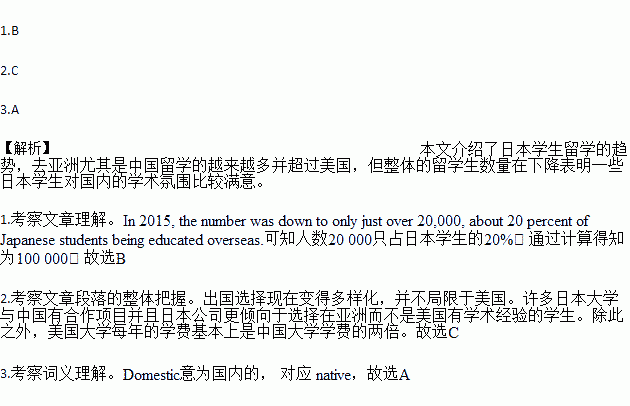题目内容
The number of Japanese students in the Chinese mainland is more than those studying in the US, according to Japan's Ministry of Education, Culture, Sports, Science and Technology, a Taiwan news outlet reported on Monday.
Japan saw the peak of studying abroad in 2010 when 124,000 sought academic careers overseas. About 61,000 Japanese studied in the US in 2010, about half the total studying abroad. But since then, the number has decreased. In 2015, the number was down to only just over 20,000, about 20 percent of Japanese students being educated overseas.
The number of Japanese going to the Chinese mainland to study has been rising since 2009 and now surpasses the US.
An official spokesman said, "Choices are various for studying abroad nowadays, not just limited to the US. Many Japanese universities have an increasing number of exchange pro-grams with Chinese universities and Japanese companies now tend to prefer people with academic experience in Asia rather than the.US or Europe as previously. Tuition fees (学费)are another reason. Annual fees in US universities are almost twice those charged by Chinese
universities.”
Some Japanese experts say the decline indicates young Japanese are satisfied with the domestic situation rather than preparing for challenges outside.
1.How many Japanese students studied abroad in 2015?
A. About 61,000. B. About 100,000.
C. About 124,000. D. About 200,000.
2.What does the fourth paragraph mainly talk about?
A. The tuition fees about studying in the US.
B. The choices for Japanese students to study abroad.
C. The reason why Japanese students go to study in China.
D. The problems that Japanese students have when studying in China.
3.The underlined word “domestic” in the last paragraph is closest in meaning to “ ”.
A. native B. previous
C. complex D. simple


 income: $68,168
income: $68,168